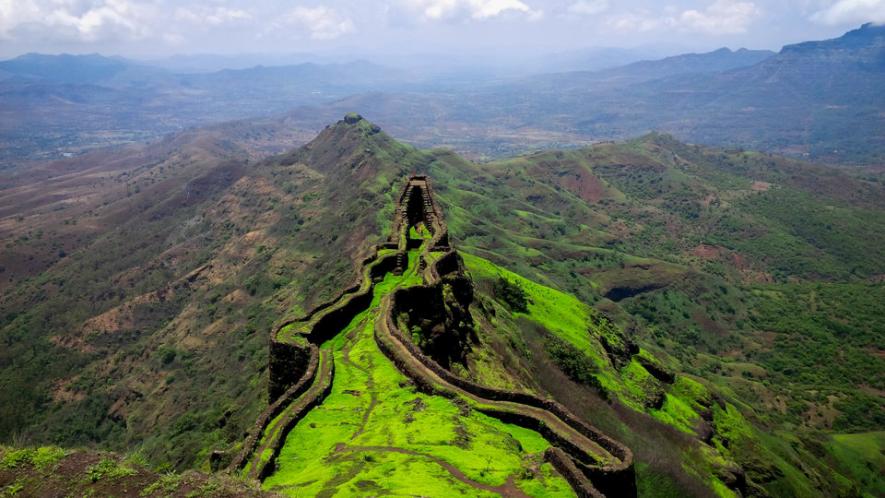Government-made Disaster: Only Half of Western Ghats to Be Declared Ecologically Sensitive?

Seven years ago, a report by Kasturirangan panel had said that 37% of the total area of the Western Ghats is ecologically sensitive, spread over about 60,000 sq. km. This area is spread across Gujarat, Maharashtra, Goa, Karnataka, Kerala and Tamil Nadu. Declaring the ghats the ‘protector of the Indian peninsula’, the report had raised alarm on the rapid erosion of natural capital for man-made capital in the Western Ghats, which has led to “excessive, unnecessary environmental damage".
Now, seven years later, only four of the six Western Ghats states have agreed to declare only 31,387 sq km — about less than half of what K Kasturirangan Committee had recommended — as ecologically sensitive areas (ESA) where mining, quarrying, and polluting industries will be banned. If the states were to follow the recommendations and if the ESA was to be implemented, it would have cracked the whip on quarrying, sand mining, thermal power projects, red-category industries such as chemicals, paper and pulp among others, besides new buildings and expansion projects with a built-up area of more than 20,000 sq m. However, the recommendations have been consistently ignored by state governments, but are significant now in the backdrop of the floods that have ravaged the states of Maharashtra, Karnataka and Kerala.
Unplanned developmental activities in the Western Ghats have added to the misery of the inhabitants of these areas. These activities include the conversion of native forests with mono-culture plantations, and the encroachment of water streams. Additionally, the mushrooming of resorts in the Western Ghats has disrupted the water flow, and the people, in the process, have lost property and life. Amidst this, the minutes of a meeting held on February 15, 2019, show that Maharashtra, Tamil Nadu, Goa and Kerala have proposed to notify only about half of the recommended 60,000 sq km as ESA. In Goa, opposed to the recommendation that 1,461 sq km area in 99 villages be declared ESA, the state plans to recognise only 707 sq km, with 69 villages as a restricted zone. Karnataka has rejected the draft notification of 2018, while Tamil Nadu has agreed to shortly submit the geo-coordinates of the area to be declared as ESA. Kerala has proposed to declare 8,656.46 sq km area as ESA against the recommendation of 13,108.7 sq km with 123 villages in ESA, while the representative of the Gujarat government did not attend the meeting. Currently, the Centre has asked Western Ghats states to submit their concerns or views on prohibited and regulated activities in ESAs and the financial incentives they expect for implementing the same.
Speaking to NewsClick, Kanchi Kohli, an independent researcher and an expert in this subject, said: “It is good that the ministry is considering that an ESA for the western ghats needs to be contiguous and unfragramented. However, reducing the area will have a limited conservation value as areas adjoining the ESA will continue to be vulnerable. It will also not be able to veer off threats and reduce their vulnerability.” Many other activists on the ground have raised an alarm over the nexus of corporate giants with the government.
Also read: Modi Government: Inaction on Climate Change
Speaking to NewsClick, Stalin Dayananad, conservationist from Van Shakti, said, “After repeated consultations and pressure, the area has now been diluted to less than 15% of the Ghats, this means opening the floodgates for a water crisis. The money that will be spent on fighting the miseries of the people would be far more than the money which is to be made by destroying the area. The Ghats are the only region which is water sufficient. This move is a shot in the foot.” He added, “The area is being reduced only to benefit vested interests and to make money illegally for short-term gains. This essentially means inviting a crisis.”
Dayandand explained that the reluctance on the parts of the states also contradicts existing norms as declared by the Supreme Court, which state that any area by virtue of its ecological importance and value renders itself unavailable for commercial exploitation. The interests of private firms may be hurt by it, but it does benefit the larger national interest.
Many activists have said that this can have disastrous results if the development goes unabated. Speaking of the scale of this development, Bharath from the United Conservation Movement in Karnataka, said, “In Karnataka alone, over 21 lakh trees will be cut in the sensitive zones in the name of development and over 29 projects are coming up in the region which expose the political-corporate nexus, damaging the ecological balance.”
The report by a panel headed by ecologist Madhav Gadgil had suggested that the whole ESA should be divided into three categories with different rules for each. It had said that 90% of the Western Ghats should be a no-go area.
One key proposal was to designate the entire Western Ghats as an Ecologically Sensitive Area (ESA), and then assign three levels of sensitivity to the regions. These were Ecologically Sensitive Zone 1 (ESZ1), Ecologically Sensitive Zone 2 (ESZ2) and Ecologically Sensitive Zone 3 (ESZ3) depending on the topography, climatic features, hazard vulnerabilities, ecological resilience and origin of rivers, among other factors. The idea was to ensure sustainable development in these areas by focussing on conservation of the ecosystem. Interestingly, once the report was out, there was no official communication on the part of the ministries of the states. Gadgil had stated, “I had requested for an appointment with the environment minister, but she refused.” The Ministry of Environment, under pressure, decided to review the recommendations of the report submitted by Gadgil panel much later.
With the recent floods, it has become clearer that the lack of political will to crackdown on industrial activity has been a key factor in the making of disasters – as most sites where landslides took place, in fact, fall into the zones which would otherwise have been marked ecologically sensitive, had the key recommendations of the report been adopted.
Also read: Modi 2.0: Same Destructive Policy on Environment?
Get the latest reports & analysis with people's perspective on Protests, movements & deep analytical videos, discussions of the current affairs in your Telegram app. Subscribe to NewsClick's Telegram channel & get Real-Time updates on stories, as they get published on our website.























